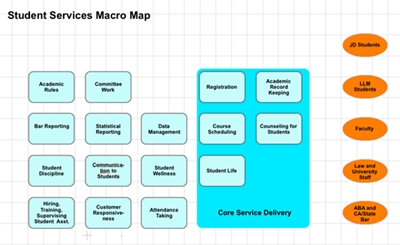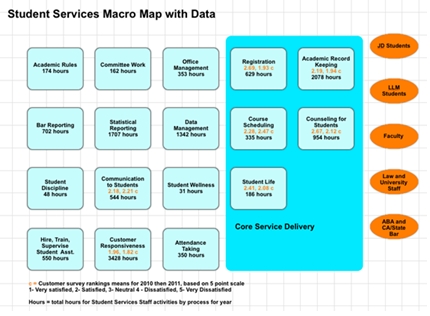Posts
5 Early Warning Signals for a BPI Project
/in Project Management/by Shelley SweetCan you recognize the early warning signals that derail a business process improvement project? Many articles have been written about what makes process improvement projects fail and usually they list critical success factors. But the real question is how do you recognize the leading indicators in a process? And once you identify those signals what action should you take to cure the ill and get the process back on track or put a halt to the project altogether?
Let’s look at the stages of the BPM Methodology and identify early warning signals and then suggest some countermeasures that are helpful to get things righted again.

This graphic shows the four stages of the BPM Methodology and the detailed phases of stage 2, the Business Process Improvement Project.
The first early warning signal is in Stage 1, Process Selection, or choosing which process to work on. It’s not that there is one right process to work on first but the choice of a poor project creates many challenges that often lead to a bad name for the whole concept of business process management. The wrong process choice is usually from three circumstances:
- Starting with an enterprise project with several cross-functional stakeholder groups participating.
- Choosing a project where a single Executive Sponsor cannot be designated and it needs two to three Process Owners.
- Starting with a project that requires a different culture than the organization currently has. This would be the case if the culture was authoritarian and it tried to use employee process improvement teams.
The answer to these warning signals is don’t start with a large enterprise process projects without the necessary leaders, and a culture to support it. Instead start smaller, with a key sub process, with leadership and a culture in that function or business unit that support employees working together and understanding how to look at a process and use data, diagrams, and the voice of the customer to improve it.
In the Chartering and Staffing phase of the BPI project there are many critical success factors (It is the beginning of the project! Get it right and you are off to a good start, but get it wrong and you’ll create numerous problem areas). Let me discuss two factors:
The Project Charter
Below are four early warning signals that can come up during the charter process.
- Having no charter. Maybe this happens because the BPM professional staff or IT knows this process needs working on and just begins trying to improve it. There is no written charter, and minimal involvement of the business executives in defining the improvement goals.
- No baseline measures. Without baseline measures, there is no quantitative data to see how critical this problem is, as well as data to see what the current values are and what kind of goal values should be set for the improvement.
- Uncommitted leadership. There is no Process Owner who is designated and steps up to guide this effort, setting the goals, vision, measures, scope, and selecting and providing the necessary team resources. Or the Process Owner has limited time for the team and moves onto other initiatives.
- Overburdened team members. Several team members says they have too many other projects and will not be able to devote time to this additional BPI project.
What can you do in these situations?
- If there is no charter, stop and develop one. Go back and do it. Write it down, put it in the Shared Repository and keep using it and iterating it as the project moves along. If the company has a real anathema to charters, don’t call it a charter, but gather the elements, and name the file something else, or put it in Blueworks Live in the appropriate fields as part of the project overall.
- Once you have the improvement goals for the project they will need measures. So name the appropriate measurement categories and then gather the real baseline data. It doesn’t have to be for the past three years; make it simple. But it may take some manual work this first time because process measures are not automated in most companies today.
- If you have uncommitted leadership, stop. Get different leadership, but make sure they have the responsibility for the process. Or, pick a different process where there is the appropriate Process Owner with commitment to the BPI project. Uncommitted leadership is a big stumbling block –not worth investing in.
- Overburdened team members are usually a sign of a larger problem—the company has too many priorities and keeps adding more assignments without taking some items off the plate. Team members can be ‘conscripted’ to join the team, but if they really do not have time to work on the BPI they will soon start voting with their feet and just not coming to working sessions. So reconsider if this is the right process at this time. Maybe another process where the employees are not so stretched would be better. If just one or two team members are overburdened, it may be possible to find good alternates, but if there are several, don’t start this BPI project.
These are important leading indicators that the process is in trouble. Take the early warning signals as valid information, have a discussion with the appropriate leaders, especially the Process Owner and take action. Otherwise your BPI project could drag on, probably getting weaker, and not moving toward success.
About the Author
 Shelley Sweet, the Founder and President of I4 Process, and author of The BPI Blueprint
Shelley Sweet, the Founder and President of I4 Process, and author of The BPI Blueprint, is a highly respected BPM Practitioner. She provides consultation, workshops and training programs for clients ranging from start-ups to Fortune 500 companies, educational institutions, and government organizations. Her programs are based on a unique 3-PEAT method of modeling processes and analyzing data that accelerates operational improvements, and builds leaders and employees who sustain operational excellence. Want to learn more about BPM metrics? Email Shelley at: [email protected]
Macro Maps Help You Align Processes and Strategy
/in Process Management/by Shelley Sweet When organizations first start doing process improvement they use a myriad of ways to decide which processes to improve first, such as:
When organizations first start doing process improvement they use a myriad of ways to decide which processes to improve first, such as:
- IT bought some software and needs to install it, so let’s look at the current process first.
- A leader raised his hand and said, “I’d like to start with this one.”
- A department wants to improve the process because it would help in a key initiative.
- An ‘easy’ process is chosen to start on.
But after a number of processes are selected with this ‘whoever is interested’ approach, leaders and process Improvement practitioners see that it would make sense to select processes that are underperforming, would provide increases in market share and revenue, or would directly support key strategic initiatives. In order to do that, you need to have an understanding of core process in the company now. A Macro Map can help.
A Macro Map is a graphical rendering of an organization as a portfolio of processes. (Many thanks to my colleague Jerry Talley for initially developing this concept of a Macro Map. [www.jlTalley.com] He and I have been using it and improving it ever since.) Here’s an example:

In this example, the core processes (ones that produce the key outputs of the organization) are highlighted in one section, support processes in another section, and customers in the third section.
How do you Build a Macro Map?
I suggest starting with a small group of executives/managers who know the work of the department or division. (If you are doing this for the whole enterprise, you will need to build it by groups and then form the total picture, making sure to show the cross functional processes.) Build the first draft of the macro map with them, and then take it to staff and have them verify it and add to it. Below are some specifics to help you with the method.
With the managers:
- Begin with listing the customers – the people who receive or use the output.
- Then list the core products or services delivered by the department.
- Now identify the processes that produce the core products.
- Then identify the processes that support the delivery of the core products. Examples of these could be planning, scheduling staff, research, securing resources.
Then take the map in graphic form to a representative staff group.
- Explain how you built the first draft of the map with the managers, and what its components are.
- Start with the core processes and ask them if anything is missing or needs revision.
- Then go to the support processes.
- Ask them if they can see the components of their job in different place on the Macro Map. What components of their job are missing?
- Keep adding and revising the map as suggestions are made.
How the Macro Map is Used
- The Macro Map provides a list of the portfolio of processes for the department or organization. This enables anyone to compare the voice shouting the loudest for a process selection to be compared to the whole portfolio. START HERE
- These processes are categorized, so it’s easy to see which are the core ones supporting customer deliverables, and what other types of processes there are. (This helps to make it clear which ones are the most important to the customers.)
- Add quantitative data to the Macro Map. The Macro Map below is the same one as shown at the top, but now it has data showing number of hours worked on each process and the customer satisfaction ranking. It is obvious which ones demand the most employee time. And for this organization, where the goal was to streamline processes, reduce workload, and not hire additional employees, it was obvious which ones to work on first.

Some organizations create a Business Architecture graphic to show how business strategy, functions, processes, technology and data relate. The Macro Map is simpler than that and focuses on processes and customers. When you add baseline data to a Macro Map, you visualize the criteria that the organization has chosen to use to prioritize their projects. In the example for Student Services it was employee hours and customer ratings. Those might now have been my choice, but the organization had these metrics and they worked fine. When doing the first Macro Maps I like to keep the measurement simple – not requiring weeks to gather. Other measurement criteria could include costs, throughput, comparisons against competitors, variability, market share, risk, or alignment with the strategy. Quantitative measurement values point to the top three to five processes, but leaders need to consider some other parameters – namely time to complete, complexity, cost, etc. that could influence the choice of one project or another.
The macro map is a wonderful info graphic to display and categorize all the processes. It also gets executives and employees engaged in thinking about the big picture by process, and helps each one relate it to their own work. And it doesn’t take that long to build. Try it!
About the Author
 Shelley Sweet, the Founder and President of I4 Process, and author of The BPI Blueprint
Shelley Sweet, the Founder and President of I4 Process, and author of The BPI Blueprint, is a highly respected BPM Practitioner. She provides consultation, workshops and training programs for clients ranging from start-ups to Fortune 500 companies, educational institutions, and government organizations. Her programs are based on a unique 3-PEAT method of modeling processes and analyzing data that accelerates operational improvements, and builds leaders and employees who sustain operational excellence. Want to learn more about BPM metrics? Email Shelley at: [email protected]
Risk Management Best Practice 3 – Procedure Annotation and Commitment Tracking
/in Premium, Procedure Development, Risk Management/by StrategyDriven Maintaining compliance with regulatory requirements, industry guidelines, and organizational commitments is the responsibility of every employee. Compliance typically occurs on a day-to-day basis through the performance of common policies, processes, and procedures. Subsequently, most organizations embed the actions necessary to achieve compliance within their instructional manuals. Ensuring these actions are both followed and remain in place over time is key to a successful compliance program.
Maintaining compliance with regulatory requirements, industry guidelines, and organizational commitments is the responsibility of every employee. Compliance typically occurs on a day-to-day basis through the performance of common policies, processes, and procedures. Subsequently, most organizations embed the actions necessary to achieve compliance within their instructional manuals. Ensuring these actions are both followed and remain in place over time is key to a successful compliance program.
Hi there! Gain access to this article with a StrategyDriven Insights Library – Total Access subscription or buy access to the article itself.
| Subscribe to the StrategyDriven Insights Library
Sign-up now for your StrategyDriven Insights Library – Total Access subscription for as low as $15 / month (paid annually). Not sure? Click here to learn more. |
Buy the Article
Don’t need a subscription? Buy access to Risk Management Best Practice 3 – Procedure Annotation and Commitment Tracking for just $2! |

 The complexity of modern organizations necessitates a collage of policies, processes, and procedures to guide their operations. Some procedures guide the actions of personnel within a single workgroup while others govern interactions and handoffs between workgroups.
The complexity of modern organizations necessitates a collage of policies, processes, and procedures to guide their operations. Some procedures guide the actions of personnel within a single workgroup while others govern interactions and handoffs between workgroups.